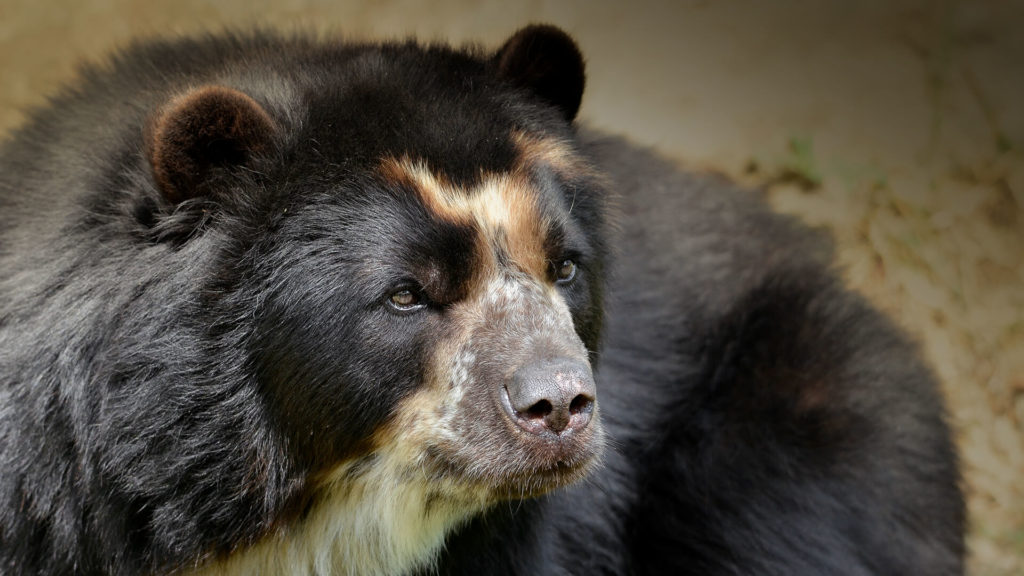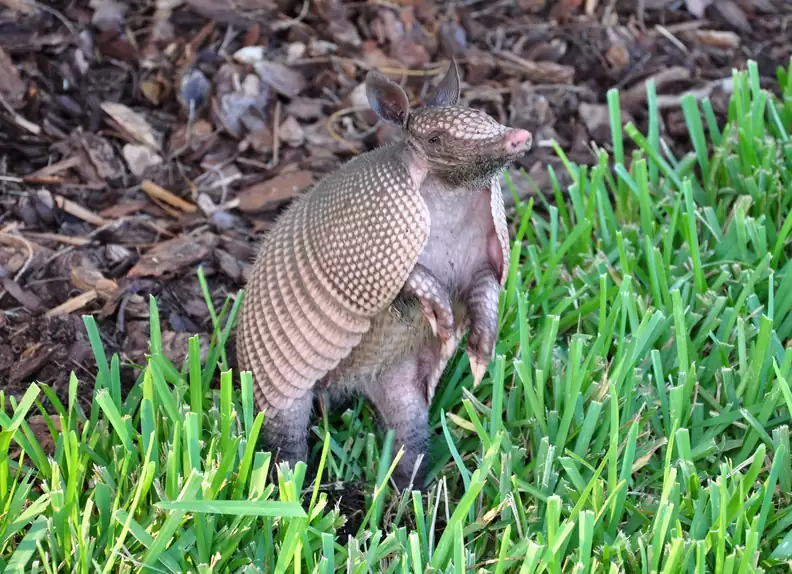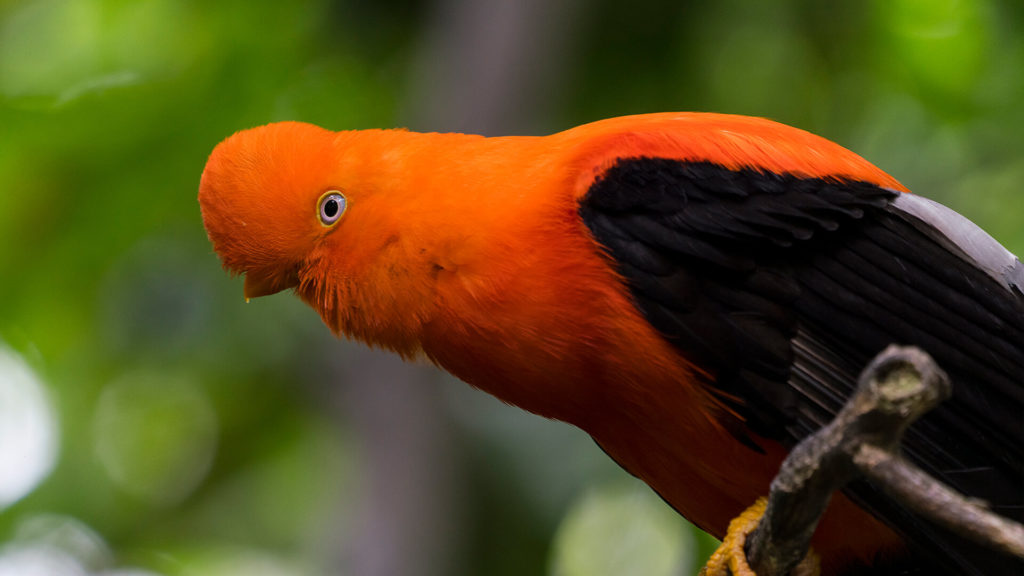Welcome to our guide about the indigenous animals of Peru! Peru is a country rich in biodiversity, with a variety of unique and fascinating creatures that call it home. From the depths of the Amazon rainforest to the soaring peaks of the Andes mountains, Peru’s diverse ecosystems provide a habitat for an incredible array of wildlife.
In this guide, we will take you on a journey through the different regions of Peru and introduce you to some of its most iconic and lesser-known animal species. You’ll discover the elusive jaguars of the Amazon, the adorable spectacled bears of the Andes, and the mysterious marine creatures of the Pacific coast.
We’ll also delve into the cultural significance of these animals to the indigenous peoples of Peru, who have lived in harmony with their natural surroundings for centuries. By learning about these amazing creatures, we hope to foster a deeper appreciation for the beauty and complexity of Peru’s natural world and the importance of protecting it for future generations.
So come with us on this journey of discovery and let’s explore the fascinating world of Peru’s indigenous animals together!
15 Indigenous Animals In Peru
Jaguar

The jaguar is a powerful and majestic big cat that can be found in the dense and vast Amazon rainforest of Peru. It is the largest cat in the Americas and the third-largest cat in the world, after the tiger and lion. The jaguar is a top predator in its habitat and plays a crucial role in maintaining the balance of the ecosystem.
Jaguars are known for their stunningly beautiful coats, which are covered in spots or rosettes. Their coats are typically orange or tan, but they can also be black. Jaguars have strong jaws and muscular bodies, which allow them to hunt and take down large prey such as deer, peccaries, and even caiman.
Despite their strength and hunting abilities, jaguars are elusive and rarely seen by humans. They are primarily active at night, and their nocturnal nature makes them difficult to observe in the wild. However, visitors to the Amazon rainforest in Peru can sometimes spot jaguars on guided nature tours or from observation platforms in wildlife reserves.
The jaguar is an important cultural symbol for many indigenous peoples in Peru, who have lived in close proximity to these big cats for centuries. Jaguars are often revered as sacred animals and are a central part of many traditional stories and rituals. However, human activities such as habitat destruction and hunting have put the jaguar population at risk, and they are now considered a near-threatened species.
If you’re lucky enough to spot a jaguar in the wild, it’s important to keep a safe distance and respect their habitat. Observing these magnificent creatures in their natural environment can be an unforgettable experience, and it is our responsibility to protect them for future generations.
Andean condor

The Andean condor is a massive bird of prey that can be spotted soaring over the Andes mountains of Peru. It is one of the largest flying birds in the world, with a wingspan that can reach up to 10 feet. The Andean condor is a fascinating creature that has long captivated the imaginations of people throughout South America.
The Andean condor has a distinctive appearance, with black feathers and a large, featherless head that is often adorned with white feathers. Males have a fleshy crest on their heads that is used in courtship displays. Andean condors are scavengers, feeding on the carcasses of large animals such as llamas, alpacas, and deer. They are known for their excellent eyesight and are able to spot their food from high in the air.
The Andean condor has a special cultural significance in Peru, where it is often considered a symbol of freedom and power. In Inca mythology, the condor was believed to be a messenger between the gods and the people. Today, the Andean condor is a protected species and can be observed in various parts of Peru, including the Colca Canyon and the Sacred Valley.
Despite being a protected species, the Andean condor still faces many threats, including habitat loss, hunting, and poisoning from eating contaminated food. Conservation efforts are underway to protect this incredible bird, and visitors to Peru can learn more about these efforts and see the Andean condor in its natural habitat through guided tours and visits to wildlife reserves.
If you’re planning a trip to Peru, keep an eye out for the Andean condor soaring high in the sky. This majestic bird is a true icon of the Andes mountains and an important part of Peru’s rich natural and cultural heritage.
Spectacled bear

The spectacled bear is a unique and adorable bear species that can be found in the cloud forests and high-altitude regions of the Andes mountains in Peru. It is the only bear species native to South America and is often recognized by the distinctive “spectacle” markings around its eyes.
Spectacled bears are known for their shaggy fur and distinctive coloring, which can vary from black to brown to reddish-brown. They have powerful jaws and sharp claws, which they use to climb trees and search for food. Spectacled bears are omnivores and feed on a variety of plants, fruits, and small animals.
Despite their cute and cuddly appearance, spectacled bears are wild animals and should be treated with caution. They are known for their shyness and avoidance of humans, but can become aggressive if they feel threatened or cornered.
Spectacled bears are an important cultural symbol in Peru and are often represented in traditional art and handicrafts. They have also played a role in indigenous folklore and mythology, and are sometimes revered as spiritual beings.
Like many other wildlife species in Peru, spectacled bears are threatened by habitat destruction, hunting, and other human activities. Conservation efforts are underway to protect these amazing creatures and their habitats, and visitors to Peru can learn more about these efforts through guided tours and visits to wildlife reserves.
Pink river dolphin

The pink river dolphin, also known as the boto or Amazon river dolphin, is a unique and rare species of dolphin that can be found in the Amazon River and its tributaries in Peru. It is one of the largest species of freshwater dolphins in the world and is easily recognized by its distinctive pink color.
Pink river dolphins have a sleek and streamlined body, with a long snout and small eyes. They are known for their playful and curious behavior, and are sometimes seen interacting with humans in the water. Pink river dolphins are primarily fish-eaters and can be found in the deeper parts of the river, as well as in flooded forests during the rainy season.
In Peruvian folklore and mythology, pink river dolphins are often associated with transformation and are sometimes considered to be shape-shifters or magical beings. They are an important cultural symbol for many indigenous communities in the Amazon region.
Despite their cultural significance, pink river dolphins face many threats, including habitat destruction, pollution, and hunting. They are listed as a vulnerable species by the International Union for Conservation of Nature (IUCN), and efforts are underway to protect their habitat and raise awareness about their conservation status.
Giant otter

The giant otter is a fascinating and highly social animal that can be found in the Amazon rainforest and other freshwater habitats of Peru. It is the largest species of otter in the world and is known for its playful and energetic behavior.
Giant otters have long, sleek bodies and webbed feet, which make them excellent swimmers. They have dense fur that helps to keep them warm in the cool waters of their habitat, and their keen senses of sight and hearing help them to locate their prey. Giant otters are carnivores and feed on a variety of fish, crabs, and other small animals.
Giant otters are highly social animals and live in family groups that can consist of up to 20 individuals. They communicate with each other through a complex series of vocalizations and physical gestures, and often engage in play behaviors such as sliding down muddy banks or chasing each other through the water.
Despite their playful nature, giant otters are also skilled hunters and can be quite aggressive when threatened. They are listed as an endangered species due to habitat destruction, hunting, and pollution, and conservation efforts are underway to protect these amazing creatures and their habitats.
Anaconda

The anaconda is a massive and powerful snake that can be found in the swamps and wetlands of the Amazon rainforest in Peru. It is one of the largest species of snakes in the world and can reach lengths of up to 30 feet or more. The anaconda is a formidable predator that plays a crucial role in the Amazon ecosystem.
Anacondas have a distinctive appearance, with dark green skin covered in brown spots. They have large heads and powerful jaws, which they use to capture and swallow their prey whole. Anacondas are carnivorous and feed on a variety of animals, including fish, birds, and mammals.
Despite their impressive size and hunting abilities, anacondas are elusive and often difficult to spot in the wild. They are typically found near water, and are most active at night. Visitors to the Amazon region in Peru can sometimes spot anacondas on guided nature tours or from observation platforms in wildlife reserves.
Anacondas have a special cultural significance in many indigenous communities in the Amazon region. They are often revered as powerful and mysterious creatures, and are sometimes associated with spiritual beliefs and traditions.
Like many other wildlife species in Peru, anacondas are threatened by habitat destruction and hunting. Conservation efforts are underway to protect these amazing creatures and their habitats, and visitors to Peru can learn more about these efforts through guided tours and visits to wildlife reserves.
Hoatzin

The hoatzin is a unique and fascinating bird that can be found in the swamps and wetlands of the Amazon rainforest in Peru. It is known for its distinctive appearance, as well as its unusual digestive system, which produces a distinctive odor that has earned it the nickname “stinkbird.”
Hoatzins have a distinctive appearance, with a plump body, long tail feathers, and a distinctive blue face with bright red eyes. They are primarily herbivores and feed on a variety of leaves and fruits, which they ferment in their unique digestive system to extract nutrients. The fermentation process produces a distinctive odor, which is often compared to that of cow manure.
Despite their unusual appearance and odor, hoatzins are an important part of the Amazon ecosystem and are considered a keystone species. They help to distribute seeds throughout the forest and provide a food source for predators such as jaguars and harpy eagles.
Visitors to the Amazon region in Peru can observe hoatzins in the wild by taking guided tours or visiting wildlife reserves. Seeing these unusual and fascinating birds up close can be a truly unforgettable experience, and can help to raise awareness about the importance of protecting the unique and precious biodiversity of the Amazon region.
Peruvian hairless dog

The Peruvian hairless dog is an ancient breed of dog that can be found throughout Peru. It is one of the oldest dog breeds in the world, with a history that can be traced back to pre-Inca times. The Peruvian hairless dog is also known as the Peruvian Inca orchid, or simply the Inca dog.
Peruvian hairless dogs have a distinctive appearance, with a hairless body and skin that can be various colors, including brown, gray, and black. They have long legs and a lean, muscular body, which gives them an elegant and graceful appearance.
Peruvian hairless dogs have played an important role in Peruvian culture for centuries. They were revered by the ancient Inca civilization, who believed that they had mystical and healing properties. Today, they are often kept as pets and are known for their loyalty and affectionate nature.
Despite their unique appearance and cultural significance, Peruvian hairless dogs are not recognized by all dog breed registries, and are sometimes subject to discrimination and misunderstanding. However, they are beloved by many Peruvians, who consider them a treasured part of their national heritage.
Andean fox

The Andean fox, also known as the culpeo fox, is a small and elusive fox that can be found in the high-altitude regions of the Andes mountains of Peru. It is one of the largest species of foxes in South America and is known for its thick, luxurious fur and unique hunting strategies.
Andean foxes have a distinctive appearance, with reddish-brown fur, a long bushy tail, and white patches on their face and chest. They are well-adapted to the high-altitude regions of the Andes and can survive on a diet of small mammals, birds, and insects.
Despite their small size, Andean foxes are skilled hunters and are known for their unique hunting strategies. They have been observed hunting in groups, which is unusual for foxes, and can also use their keen sense of hearing to locate prey underground.
Visitors to Peru can observe Andean foxes in the wild by taking guided tours or visiting wildlife reserves. Seeing these fascinating creatures up close can be a truly unforgettable experience, and can help to raise awareness about the importance of protecting the unique and precious biodiversity of the Andes mountains.
Yellow-tailed woolly monkey

The yellow-tailed woolly monkey is a critically endangered species of monkey that can be found in the cloud forests of the Andes mountains of Peru. It is one of the rarest primates in the world and is known for its long, shaggy fur and distinctive yellow tail.
Yellow-tailed woolly monkeys have a distinctive appearance, with long, shaggy fur that helps to protect them from the cold and wet conditions of their habitat. They have a prehensile tail, which allows them to grip branches and navigate their environment. Yellow-tailed woolly monkeys are primarily herbivores and feed on a variety of leaves, fruits, and flowers.
Despite their unique appearance and importance to the ecosystem, yellow-tailed woolly monkeys are critically endangered due to habitat destruction, hunting, and other human activities. Conservation efforts are underway to protect these amazing creatures and their habitats, including efforts to establish protected areas and promote sustainable practices.
Visitors to Peru can observe yellow-tailed woolly monkeys in the wild by taking guided tours or visiting wildlife reserves. Seeing these rare and fascinating creatures up close can be a truly unforgettable experience, and can help to raise awareness about the importance of protecting the unique and precious biodiversity of the Andes mountains.
Giant armadillo

The giant armadillo is a fascinating and unusual mammal that can be found in the Amazon rainforest of Peru, particularly in the Madre de Dios region. It is one of the largest species of armadillo in the world, and is known for its distinctive armored plates and long, sharp claws.
Giant armadillos have a unique appearance, with a heavily armored body and long, sharp claws that they use to dig for food and create burrows. They are primarily nocturnal and feed on a variety of insects, including ants and termites.
Despite their armored exterior, giant armadillos are actually quite vulnerable to threats such as habitat destruction and hunting. They are listed as a vulnerable species due to their declining population, and conservation efforts are underway to protect these amazing creatures and their habitats.
Visitors to the Amazon region in Peru can observe giant armadillos in the wild by taking guided tours or visiting wildlife reserves. Seeing these unique and fascinating creatures up close can be a truly unforgettable experience, and can help to raise awareness about the importance of protecting the unique and precious biodiversity of the Amazon rainforest.
Andean cock-of-the-rock

The Andean cock-of-the-rock is a stunningly beautiful bird that can be found in the cloud forests and high-altitude regions of the Andes mountains in Peru. It is known for its bright orange feathers and unique mating rituals, which are a highlight for birdwatchers and nature enthusiasts.
The Andean cock-of-the-rock has a distinctive appearance, with bright orange feathers on the head, neck, and breast. The rest of its body is black, which makes the orange feathers stand out even more. The male of the species has a striking appearance during the mating season, when he performs an elaborate display to attract a female mate. The display involves hopping, bowing, and flapping his wings to show off his bright feathers.
Despite their stunning appearance, Andean cock-of-the-rocks can be difficult to spot in the wild due to their shy and elusive nature. They are primarily active during the early morning and late afternoon, and are often found in the canopy of the forest.
Andean cock-of-the-rocks are an important cultural symbol for many indigenous communities in the Andes mountains of Peru. They are often represented in traditional art and handicrafts, and are sometimes associated with spiritual beliefs and rituals.
Conservation efforts are underway to protect the Andean cock-of-the-rock and its habitat. Visitors to Peru can learn more about these efforts and observe these incredible birds in their natural habitat through guided tours and visits to wildlife reserves. Seeing the Andean cock-of-the-rock in the wild can be a truly unforgettable experience and can help to raise awareness about the importance of protecting the unique and precious biodiversity of the Andes mountains.
Marine otter

The marine otter is a rare and fascinating marine mammal that can be found along the rocky coasts and beaches of Peru. It is one of the smallest marine mammals in the world and is known for its playful and energetic behavior.
Marine otters have a distinctive appearance, with thick fur that helps to keep them warm in the cool waters of their habitat. They have webbed feet and a long tail, which make them excellent swimmers. Marine otters are carnivores and feed on a variety of seafood, including fish, crabs, and sea urchins.
Despite their playful nature, marine otters are also skilled hunters and can be quite aggressive when threatened. They are listed as an endangered species due to habitat destruction, hunting, and pollution, and conservation efforts are underway to protect these amazing creatures and their habitats.
One of the best places to observe marine otters in Peru is the Paracas National Reserve. The reserve is home to a large population of marine otters, as well as a variety of other marine wildlife. Visitors to the reserve can observe the marine otters from observation platforms or take guided boat tours to see them up close.
Amazonian manatee

The Amazonian manatee is a gentle and peaceful aquatic mammal that can be found in the freshwater rivers, lakes, and flooded forests of the Amazon basin in Peru. It is the largest species of freshwater mammal in the world, and is an important part of the rich biodiversity of the Amazon region.
Amazonian manatees have a distinctive appearance, with grey-brown skin and a wide, flat tail. They have paddle-like flippers, which they use to swim slowly and gracefully through the water. Amazonian manatees are herbivores and feed on a variety of aquatic plants.
Despite their large size, Amazonian manatees are often difficult to spot in the wild due to their shy and reclusive nature. They are most active at night and can often be seen near the surface of the water, taking in air before diving back down to feed.
Amazonian manatees have a special cultural significance in many indigenous communities in the Amazon region. They are often revered as sacred animals and are sometimes associated with spiritual beliefs and traditions.
Like many other wildlife species in Peru, Amazonian manatees are threatened by habitat destruction and hunting. Conservation efforts are underway to protect these amazing creatures and their habitats, and visitors to Peru can learn more about these efforts through guided tours and visits to wildlife reserves.
Vicuña

The vicuña is an elegant and graceful camelid that can be found in the high-altitude grasslands and puna regions of the Andes mountains in Peru. It is one of four species of South American camelids and is known for its soft and luxurious wool, as well as its cultural significance.
Vicuñas have a distinctive appearance, with long necks and slender bodies covered in a soft, light-brown coat of fur. They are well-adapted to life in the high-altitude regions of the Andes and can survive on a diet of tough grasses and other vegetation.
For many centuries, vicuñas have been an important part of Andean culture and are often associated with wealth and prestige. Their wool is highly prized for its softness and warmth, and is used to make a variety of high-end textiles and garments. In order to protect the species, the Peruvian government established a national reserve where vicuñas are protected and their wool can be sustainably harvested.
Today, the vicuña population in Peru is thriving, thanks in large part to conservation efforts and sustainable practices. Visitors to Peru can observe vicuñas in their natural habitat by taking guided tours or visiting the national reserve. Seeing these majestic animals grazing in the high-altitude grasslands can be a truly unforgettable experience.
Conclusion
Peru is home to a rich and diverse array of indigenous animals, each with their own unique characteristics, behaviors, and habitats. From the majestic jaguar of the Amazon rainforest to the playful giant otter of the freshwater habitats, these animals are a precious and vital part of the country’s rich biodiversity.
Visitors to Peru have the opportunity to observe these amazing creatures in their natural habitats, whether it’s the Andean condor soaring over the peaks of the Andes or the pink river dolphin swimming in the Amazon River. While many of these species are facing threats such as habitat destruction, hunting, and pollution, conservation efforts are underway to protect them and their ecosystems.
By promoting sustainable practices and raising awareness about the importance of biodiversity conservation, we can help to ensure that these amazing creatures continue to thrive for generations to come. Protecting Peru’s indigenous animals and their ecosystems is not only important for their survival, but for the well-being and sustainability of the entire planet.

Leave a Reply